Mini Split Ac Installation in your area,
Looking for an efficient way to cool or heat your home without the hassle of ductwork? Super Brothers Plumbing, Heating & Air provides professional mini split AC installation in your area, . Mini splits are perfect for additions, older homes, garages, and any space where traditional HVAC systems fall short. Our licensed technicians handle everything from sizing and placement to installation and testing, ensuring your new system delivers quiet, reliable comfort year-round.
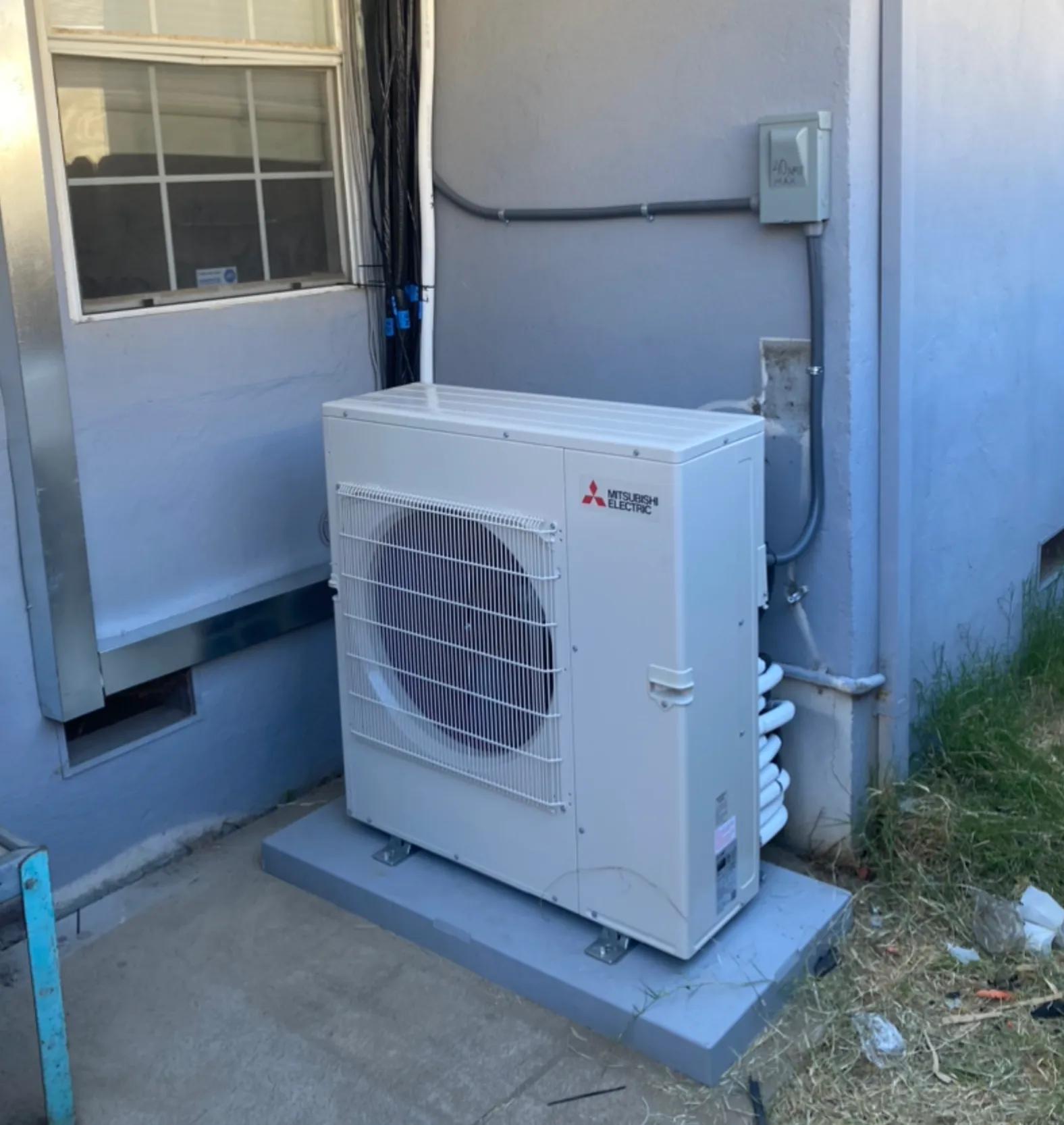
Zoned comfort (room-by-room control)
Mini split systems give you the ability to adjust the temperature in each room separately, so everyone enjoys their ideal comfort level.
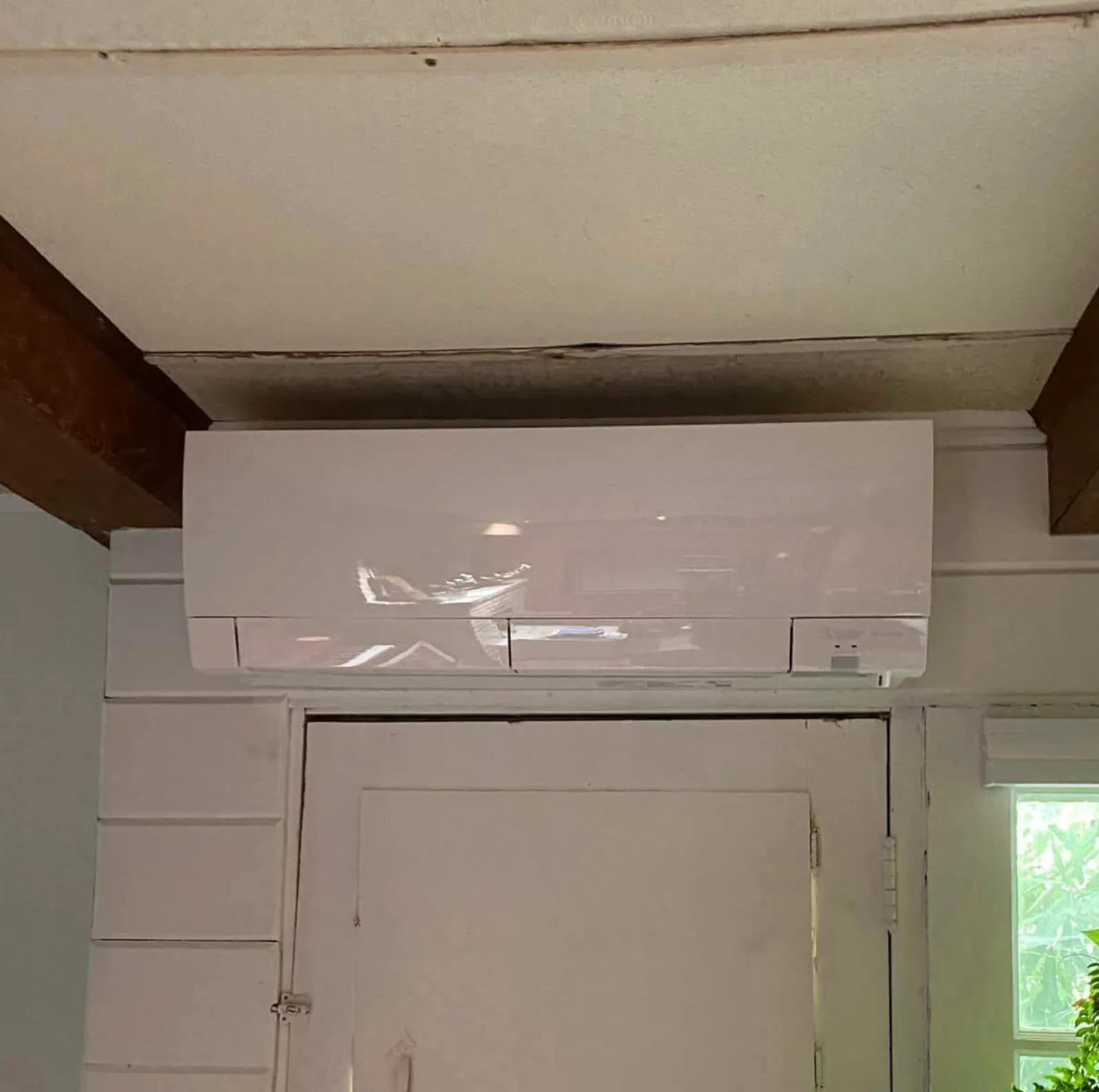
No ductwork required
One of the biggest advantages of mini splits is that they don’t require bulky, expensive ductwork. That makes them perfect for older homes, additions, garages, and sunrooms where running new ducts isn’t practical.
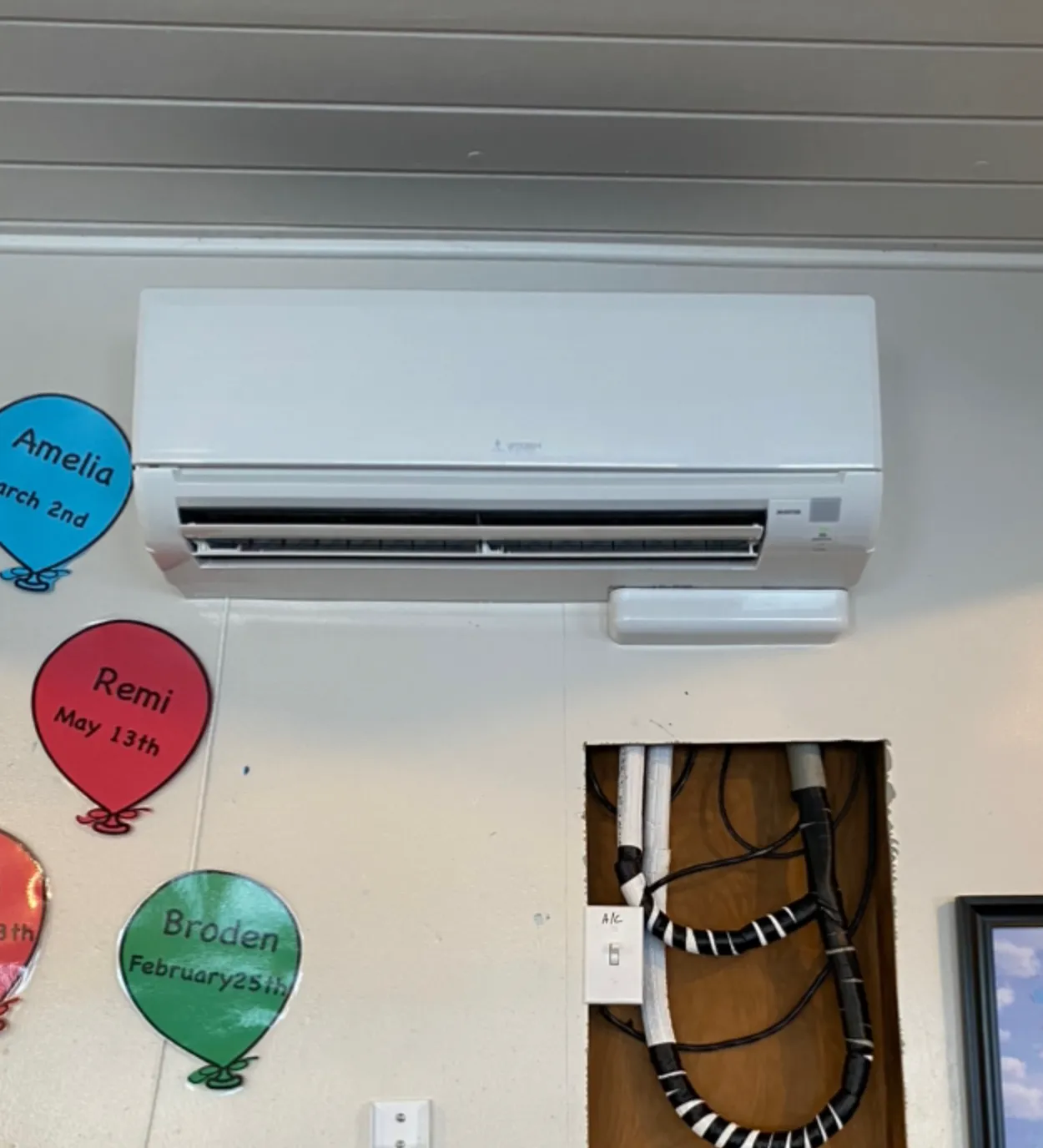
Single-zone vs. multi-zone installations
Mini splits can be designed for just one room (single-zone) or for multiple rooms (multi-zone). A single-zone system is ideal for a problem area like a master bedroom, office, or basement.
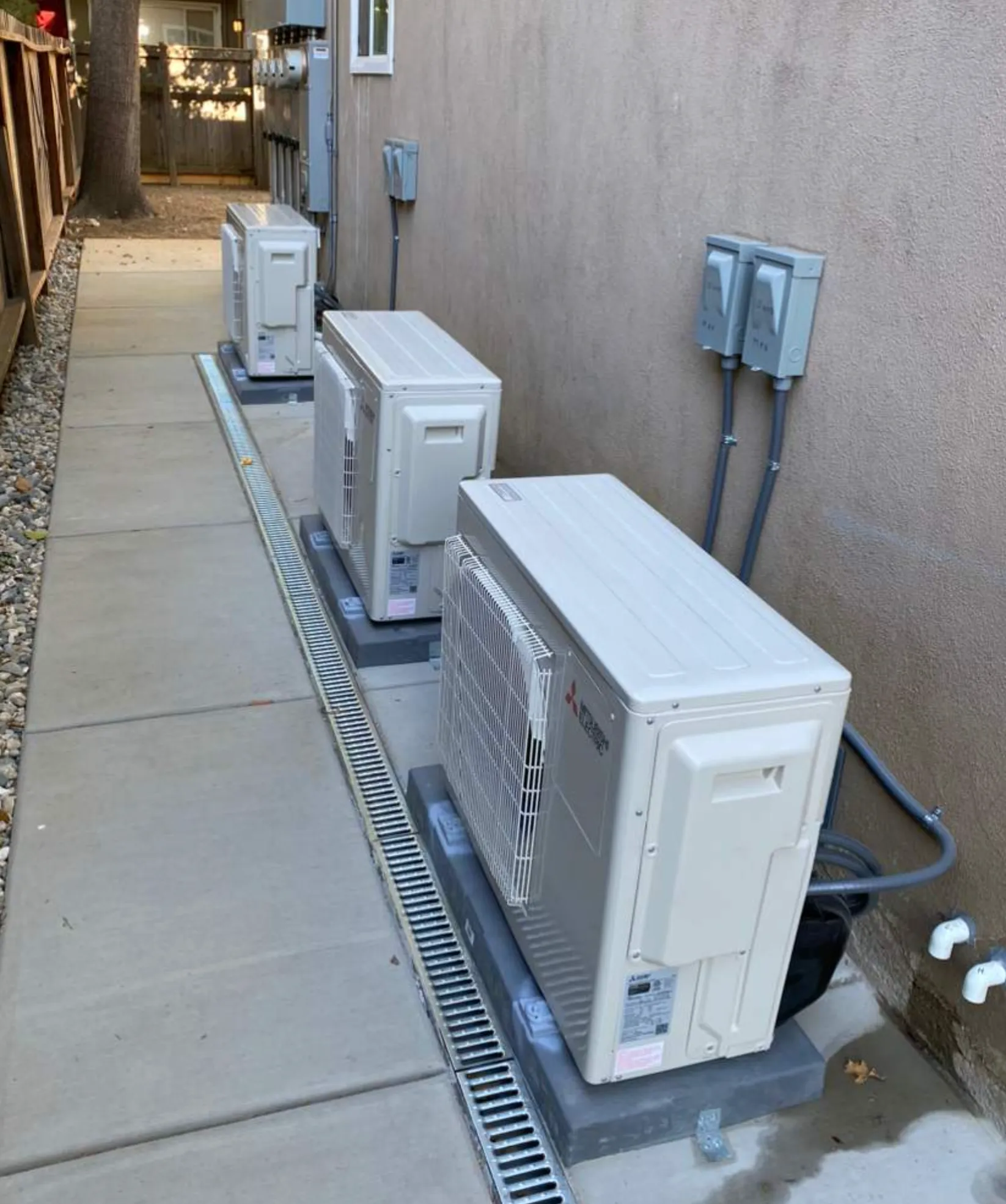
Residential & light commercial installs
Mini splits aren’t just for homes—they’re also a smart solution for offices, shops, and other light commercial spaces.
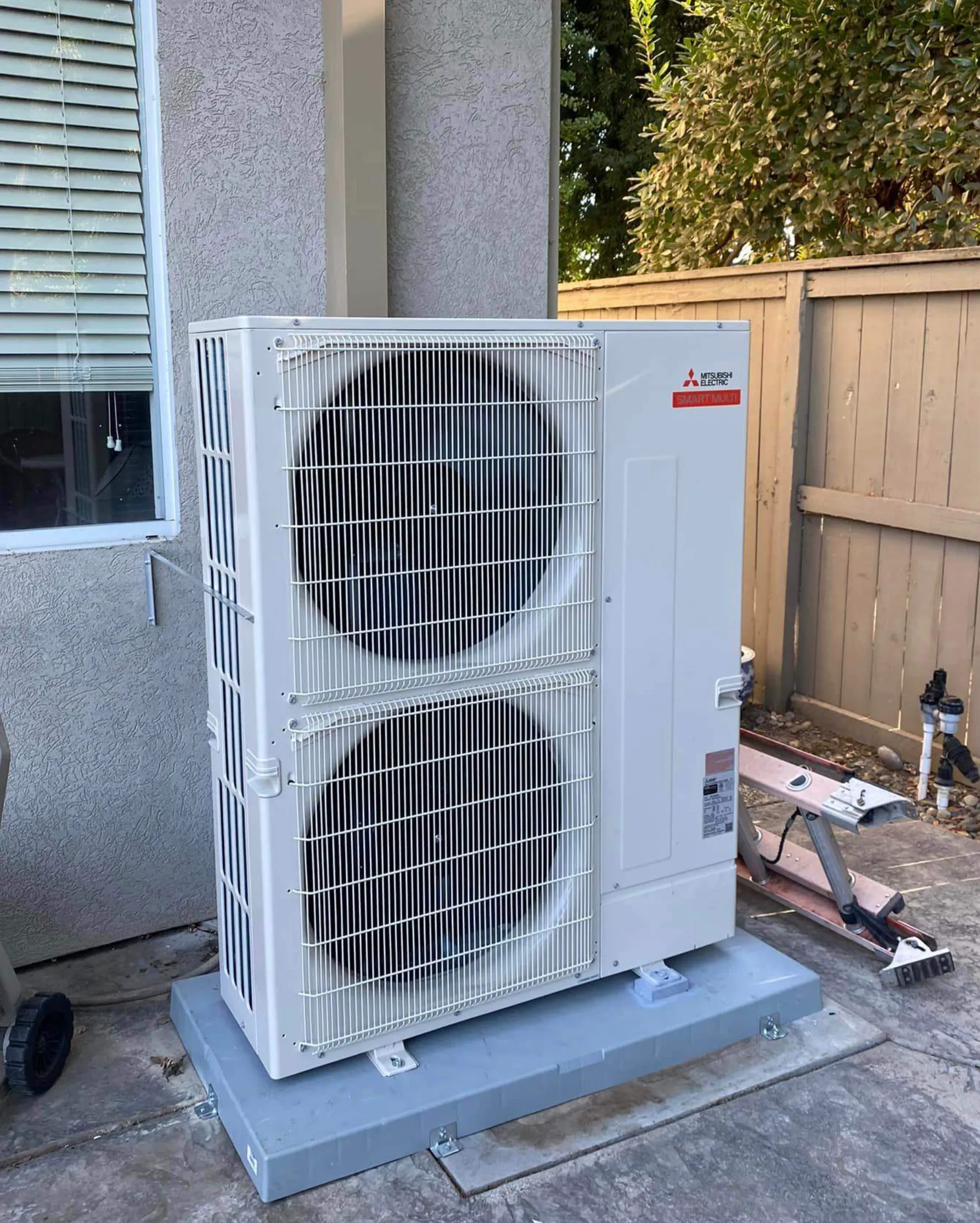
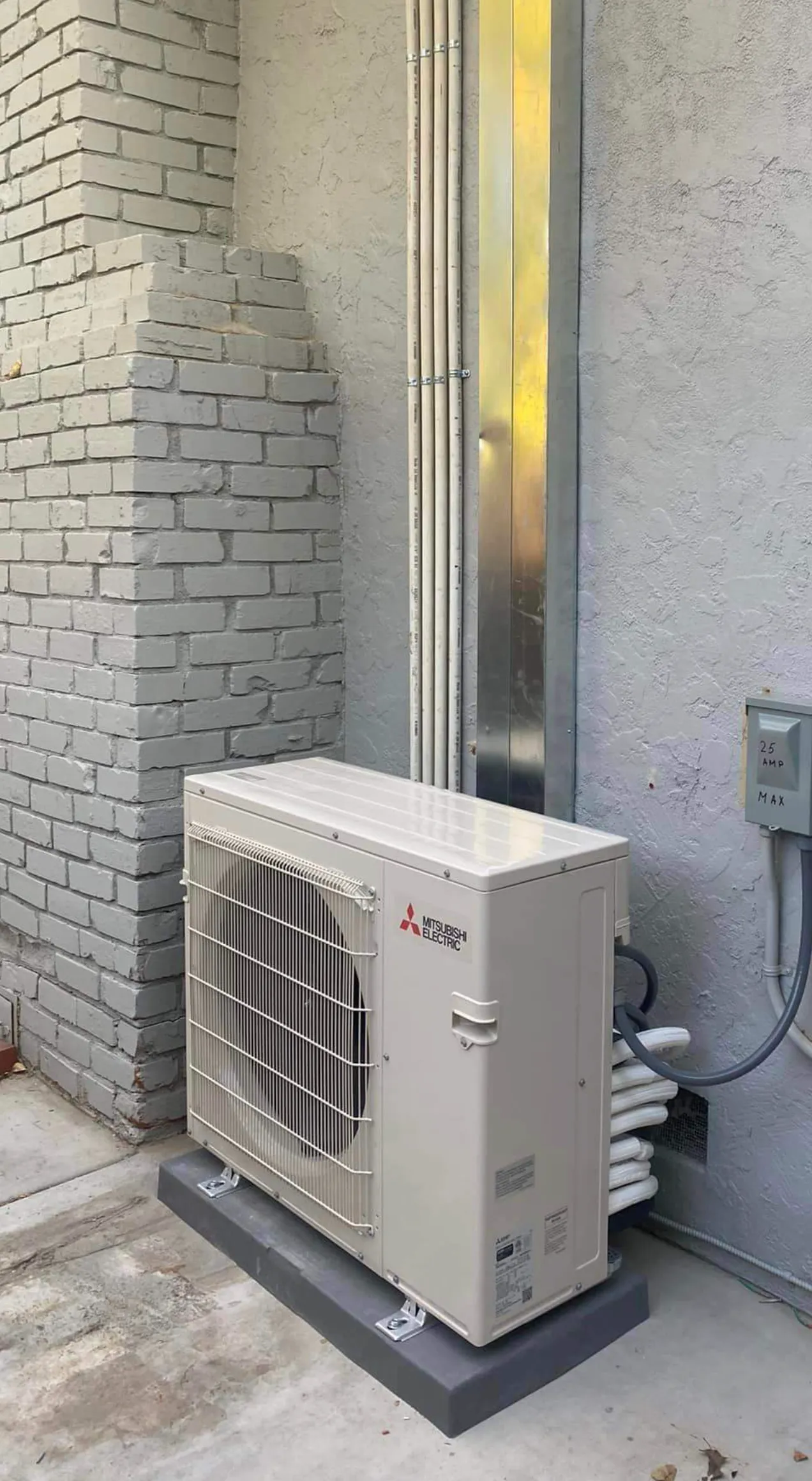
Why choose us?
Our Mini Split AC Installations Work For You
Mini split systems offer a modern way to stay comfortable, and our team in your area makes the installation process simple from start to finish. We focus on matching the right equipment to your home, installing it with care, and ensuring you understand how to get the most from your new system. With flexible options for single rooms or multiple zones, our specialists help create a solution that balances comfort, efficiency, and long-term reliability for your household.
We work around your schedule, protect your home, and finish on time—every time. No mess, no delays, just reliable results from licensed pros who care about doing it right.
Local Mini Split AC Installation Company
Mini split AC systems are one of the most versatile ways to keep your home comfortable, but proper installation is key to getting the full benefits. At Super Brothers Plumbing, Heating & Air, we specialize in ductless systems designed to improve efficiency and provide room-by-room control. Our team carefully evaluates your home, recommends the right equipment for your needs, and installs it with the attention to detail that ensures lasting performance.
Homeowners in your area choose us because we focus on making the process simple and stress-free. From the initial consultation to the final walkthrough, we explain your options clearly and keep the work area clean and organized. Whether you need a single-zone unit for a new addition or a multi-zone setup for your entire home, our licensed technicians bring the knowledge and craftsmanship to get the job done right.
Beyond installation, we also stand behind our work with dependable support and maintenance options. That means you’ll have a team ready to help protect your investment and keep your system running smoothly for years to come. With Super Brothers, you’re not just getting a mini split AC installation — you’re getting a partner dedicated to your comfort and peace of mind.
Mini Split Installation Price
Installing a mini split system is an investment in both comfort and efficiency, and understanding the cost helps you plan with confidence. in your area, the price of a new installation can vary depending on factors such as the number of indoor units, whether you choose a single-zone or multi-zone setup, and how complex the layout of your home is. Smaller projects, like conditioning a single room, are often more affordable, while larger homes with multiple zones require additional equipment and labor, increasing the overall cost.
At Super Brothers Plumbing, Heating & Air, we believe in transparency, which is why we provide detailed, written estimates before any work begins. Our pricing reflects quality workmanship, licensed professionals, and reliable equipment designed to last. While a mini split installation may cost more upfront than a window unit or space heater, the long-term savings in energy efficiency and the added comfort quickly make up the difference. Many homeowners also take advantage of rebates, tax incentives, or utility programs that help offset installation costs.
Choosing a professional installation not only ensures your system works properly from day one but also protects your warranty and prevents costly issues down the road. With Super Brothers, you’ll know the price before we start, and you’ll have the peace of mind that comes from investing in a system built for dependable performance year after year.
Mini Split Installers Near Me
When you search for “mini split installers near me” in your area, you want more than just the closest company — you want trusted experts who will do the job right. At Super Brothers Plumbing, Heating & Air, our team has years of experience installing ductless systems of all sizes, from single-room solutions to multi-zone setups for entire homes. We understand the details that matter, like proper sizing, refrigerant line routing, and clean installation, so your system runs efficiently and looks great in your space.
Choosing a local installer means faster service, personalized attention, and professionals who are familiar with building codes and climate needs in your area. Our technicians show up on time, respect your home, and explain every step of the process so you know exactly what to expect. From the initial consultation to the final system check, we’re focused on providing an installation that delivers lasting comfort and peace of mind.
If you’re ready to add a mini split to your home, Super Brothers is here to make it simple. With honest pricing, reliable workmanship, and ongoing support, we’ve built a reputation as the go-to team for ductless installation in the community. When you need “mini split installers near me,” you can feel confident choosing us for quality results that stand the test of time.
Local Mini Split AC Contractor
Hiring the right contractor is one of the most important steps when it comes to installing a mini split system. in your area, Super Brothers Plumbing, Heating & Air has earned a reputation as a dependable mini split AC contractor that homeowners can trust. Our licensed technicians handle every detail of the project, from helping you select the right system to ensuring the installation meets local codes and manufacturer requirements. We approach every job with the goal of delivering comfort, efficiency, and long-lasting performance.
As a local contractor, we understand the unique needs of homes in your area and tailor our recommendations to fit both your space and your budget. We take the time to walk you through your options — whether it’s a single-zone unit for a new addition or a multi-zone system to condition your entire home — so you feel confident in your decision. Our team is known for clear communication, clean work, and reliable results that give homeowners peace of mind.
Choosing Super Brothers means choosing more than just an installation service. It means having a contractor who stands behind their work, offers transparent pricing, and provides ongoing support after the job is done. With us, your mini split installation isn’t just another project — it’s a long-term solution for comfort and energy savings.
Conventional AC vs. Mini Split AC Comparison
When deciding between a conventional central air system and a ductless mini split, it helps to understand the key differences. Conventional AC relies on ductwork to move cooled air throughout the home, which can lead to energy loss if ducts are leaky or poorly insulated. Mini splits, on the other hand, deliver air directly to each room through wall-mounted or ceiling-mounted units, providing more efficient operation and better control over individual spaces.
For homeowners in your area, mini splits are often the better choice when dealing with older homes, additions, or areas where installing ductwork would be expensive or impractical. They also allow for zoned comfort, so you can keep one room cooler without over-cooling the rest of the house. Conventional systems are still effective for whole-home cooling in larger spaces, but they generally come with higher installation costs if ducts need replacing or repairing.
Ultimately, the decision comes down to your home’s layout, your comfort preferences, and your energy efficiency goals. Our team at Super Brothers Plumbing, Heating & Air can help you weigh the pros and cons of each system, then recommend the option that best balances cost, performance, and long-term savings.
Our Mini Split Installation Services Guarantee
Installing a ductless mini split system is more than just a home upgrade — it’s an investment in year-round comfort and efficiency. At Super Brothers Plumbing, Heating & Air, we back every installation in your area with a guarantee that ensures your system is installed correctly, operates reliably, and delivers the performance you expect. Our licensed technicians follow manufacturer-approved practices and local codes so your investment is fully protected.
If any issue arises related to our installation, we’ll return quickly to resolve it at no additional cost. We also guarantee transparent, upfront pricing with no hidden fees, so you’ll know exactly what your project includes before work begins. Our crews take care to protect your home, work efficiently, and clean up when the job is done, leaving only the comfort of your new system behind.
Our promise is straightforward: dependable workmanship, honest communication, and lasting results. With Super Brothers, your mini split installation isn’t just a project — it’s a service backed by our commitment to your comfort and peace of mind.
Mini Split Ac Frequently Asked Questions
How long does mini split installation take in your area?
Most single-zone mini split installations can be completed in a single day. Multi-zone systems may take longer depending on the number of indoor units, the layout of your home, and the complexity of the project.
How much does a mini split system cost?
The cost varies based on the number of rooms you want to condition, system size, and installation details. On average, homeowners in your area can expect a range between $3,000 and $10,000, with a written estimate provided before work begins.
Can a mini split cool and heat my home?
Yes. Most ductless systems are heat pumps, meaning they can provide efficient cooling in the summer and reliable heating in the winter, giving you year-round comfort in one system.
Do mini splits work in older homes without ductwork?
Absolutely. Mini splits are designed for spaces without existing ducts, making them ideal for older homes, additions, garages, basements, and sunrooms. Installation is minimally invasive compared to traditional HVAC systems.
How many rooms can one mini split system cover?
A single-zone system is designed for one room, while multi-zone systems can connect several indoor units to one outdoor condenser. Depending on the brand and model, a system can typically handle between 2 and 8 zones.
What maintenance do mini splits require?
Mini splits require basic maintenance such as cleaning or replacing filters, keeping the outdoor unit free of debris, and scheduling professional inspections to check refrigerant levels and electrical connections.
Local Services Available
Sewer Line Inspection
Bathroom Remodel
Whole House Filtration
Reverse Osmosis
Repipe
EV Charger Installation
Electrical Rewiring
Electrical Panel Replacement
Plumbing
Tankless Water Heater
Water Heater Replacement
Exterior Plumbing
Drain Cleaning
Attic Insulation
Duct Replacement
Whole House Fan
AC Repair
AC Installation
HVAC
Super Brothers Quality
Choose Super Brothers Plumbing Heating & Air because we use top-tier materials, deliver honest workmanship, and back every job with a real warranty. Our pricing is fair and transparent—no hidden fees, ever.
We pull the right permits, build to California code, and pass inspection. Our licensed, highly experienced team handles full plumbing and heating/air replacements and installations, so the job’s done right the first time.
- Top-tier materials
- Honest, quality service
- Workmanship warranty
- Fair, transparent pricing (no hidden fees)
- Permits handled; California code compliant; passes inspection
- Licensed & experienced in plumbing and HVAC installs





Refer Friends, Reap Rewards

Share our expert plumbing services with friends and family. For every successful referral, you earn cash rewards. Refer Now
Financing Options
Local Mini Split Ac Customers Say...
Andrii - our plumber - went above and beyond and was extremely patient with my Nana and my elderly mother. He gave a quote which I approved -…
Shout out to Serge who showed up the same day we reached out, was friendly and professional and worked very hard to fix a complicated clog in our…
Boris replaced my water main valve. He did a great job and I will be using SuperBros for any new projects in the near future.
Showed up on time, respectfully put booties on replaced the garbage disposal tested it then had me to test it and then wished us a great day.
They run a very efficient and responsive business and they came out quickly to work on my gas water tank. Andrew was super nice and thorough and explained…
We had 2 gas water heaters replaced with heat pump electric water heaters. The job was done efficiently and all cleaned up afterwards. Very satisfied with Boris and…
More Reviews
We are SO pleased with this company! We got a RIDICULOUS $3000 quote from another company to fix our shower cartridge, so I reached out to Super Brothers to see what they would charge because Google says it should only cost between $200 and $400. They quoted me $285 plus…
Scheduling was easy and the tech explained everything clearly.
Professional, kind, and got the job done right the first time. A+ service.
Very professional and courteous technicians who diagnosed the water leak right away and repaired it with minimum downtime!
Quality work and fair price. Will use again.
Had an issue with our toilet the super brothers teams was super responsive and able to come out with a tech very quickly. Boris shower up and was very professional and informative of the steps he was going to take to resolve our issue. Went above and beyond to ensure…
Did such an amazing job the heater is beautiful. He got it in quickly. It works sufficiently thank you so much for all your help.
I've used Super Brothers multiple times and recommend them. I've had two water heaters replaced, a third worked on, and other plumbing work (in different properties over the years, not in the same house. That would be a lot of work for one house!). They are professional, fast, and reasonably…
Great service installing our new sink. Thanks Boris and everyone at Super Brothers Plumbing Heating & Air.
Amazing! In spite of the disaster of having my living room flooded with water from a broken water heater, I had a smooth, swift, and peaceful experience. Serge was my tech and was very professional, respectful, clean, and did meticulous work. I'm thankful.
They handled everything quickly and kept me updated.
Our bathroom faucet was loose and leaky. Boris installed a new bathroom faucet meticulously! It only took him about an hour from arrival to departur, and he was clean, and did a great job. Thanks, Boris!
Friendly staff and top-notch results.
They replaced my faulty stopper in my bathroom sink with a popper that works better than the original. The price was very reasonable compared to their competitors and they were on time, friendly, and professional.
Super Brothers has been our Go To plumbers for several years. They are professional, efficient, and very knowledgeable on all aspects of plumbing and air conditioning. This last visit was to determine the origin of two separate leaks and repair them. Bothe leaks were quickly identified. One was immediately repaired,…
I have used Super Brothers twice in the last couple of years, i truly enjoyed the prompt services they provided, and am very happy with their professionalism and work. Everyone (Karen, Kathy, Dimitar, Boris, Nick, Val, just to name a few) that i had come across are very knowledgeable, courteous…
I had a great experience with this company for my water heater installation. Their pricing was very competitive, and the installation team was professional, efficient, and did excellent work. The staff was very responsive and always quick to answer any questions I had, which made the whole process smooth and…
Super Brothers did a great job. Mike completed the taken care of exactly what was needed. the result was great. I only did it look good, but had us up and running back on our own water supply within a couple hours while he finished the installation. Explained everything to…
very knowledgeable and professional all around!
Super Brothers has always been reliable efficient and affordable. I recommend this company to anyone who needs plumbing work.
Couldn’t be happier. Quick response time and the work was spotless. Highly recommend!
Super brothers installed my new electric water heater.amazing Job and great price I highly recommend them. thank you very much
Incredible service from start to finish! Extremely professional, kind and informative. Would recommend to anybody. Thank you Super Brothers, you saved us!!

Every job is 100% satisfaction guaranteed.
It’s our promise.
We take every step to make sure you are fully satisfied with your service, contact our office if you feel otherwise and we will make it right!

Get A Free Quote
Let’s Help You Safeguard Your Home
We Offer Mini Split AC In Nearby locations
- Alamitos
- Alum Rock
- Antelope
- Arden-Arcade
- Atherton
- Auburn
- Berryessa
- Cambrian park
- Cameron Park
- Campbell
- Carmichael
- Citrus Heights
- Coyote
- Cupertino
- Davis
- Dublin
- East Palo Alto
- El Dorado Hills
- Elk Grove
- Elverta
- Emerald Hills
- Fair Oaks
- Florin
- Folsom
- Foothill Farms
- Fremont
- Fruitridge Pocket
- Galt
- Gold River
- Granite Bay
- Hayward
- La Riviera
- Laguna
- Lemon Hill
- Lincoln
- Linda
- Live Oak
- Livermore
- Loomis
- Los Altos
- Los Altos Hills
- Los Gatos
- Loyola
- Mather
- McClellan Park
- Menlo Park
- Milpitas
- Monte Sereno
- Morgan Hill
- Mountain View
- Natomas
- Newark
- Newcastle
- North Auburn
- North Highlands
- Orangevale
- Palo Alto
- Parkway
- Parkway-South Sacramento
- Penryn
- Pleasant Grove
- Pleasanton
- Portola Valley
- Rancho Cordova
- Rancho Murieta
- Redwood City
- Rio Linda
- Rocklin
- Rosemont
- Roseville
- Sacramento
- San Carlos
- San Jose
- San Martin
- San Mateo
- San Ramon
- Santa Clara
- Saratoga
- Stanford
- Sunnyvale
- Union City
- West Sacramento
- Wilton
- Woodland
- Woodside




